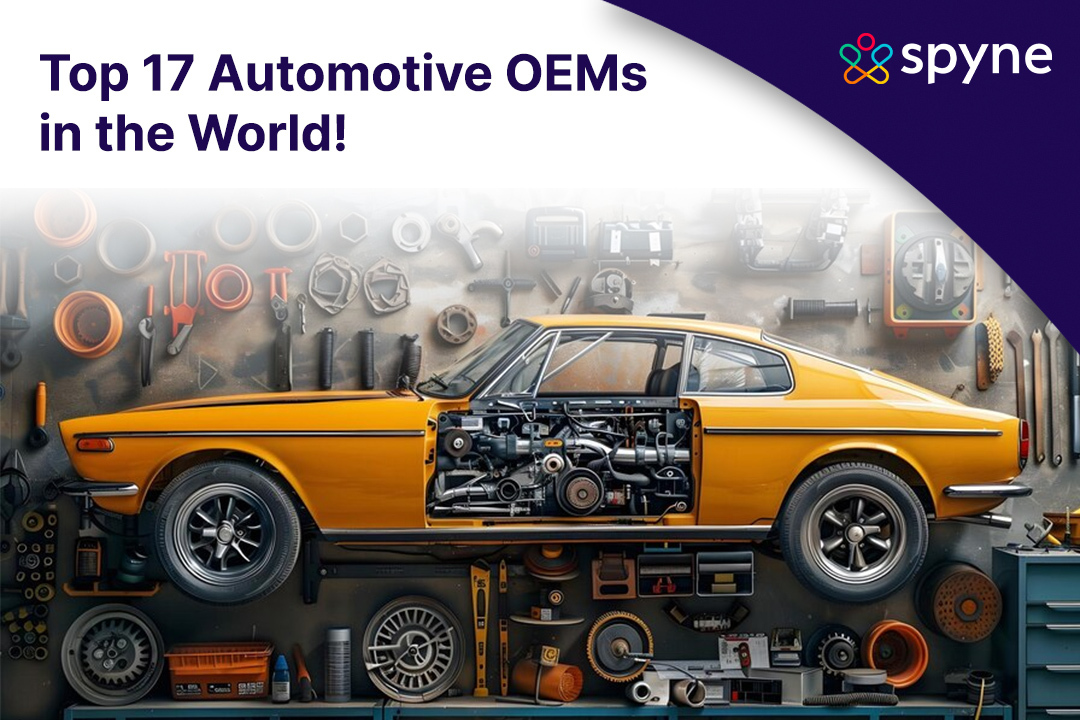The global automobile industry is in a state of thrilling transformation. Driven by elements like growing customer demand for features like safety and connectivity and the rapid development of electric and independent vehicle technologies, the market for Automotive OEM manufacturers is experiencing a growth boom. This blog explores the worldwide OEM landscape, its contemporary size, projected boom trajectory, and key drivers.
We’ll also delve into marketplace segmentation, reading the unique components, automobile types, and distribution channels that comprise the OEM ecosystem. Understanding these dynamics is critical for organizations concerned with the automotive supply chain to stay ahead of the curve and capitalize on rising opportunities.
What is an Automotive OEM?
An Automotive Original Equipment Manufacturer (OEM) acts as the backbone of the auto enterprise, or the OEM for the auto industry silently, shaping the cars we drive. Unlike car companies, which you may recognize with the logo, OEMs focus on their expertise in creating the tricky parts and additives that make up a brand-new automobile. Imagine a car as a complex puzzle – OEMs layout and manufacture the individual portions, each one meticulously designed to meet the precise necessities of a particular car model. This guarantees that each component seamlessly integrates with the car’s primary machine, making certain functionalities like excellent performance, protection, and efficiency.
OEMs in automobiles are the building blocks that bring an automobile designer’s vision to life. Their precision and innovation are paramount in delivering motors that meet the ever-evolving requirements of exceptional reliability.

What is OEM?
An automotive OEM, or original equipment manufacturer, is a company that creates parts or whole products that might be sold under another brand. OEMs are those who make the products or components bodily. They do not generally promote these products under their brand. Instead, they deliver them to brands that market and encourage them to clients.
This business version is standard in many industries, especially vehicles and computer systems. It allows brands to be aware of their strengths—layout, advertising and marketing, and distribution—and even leave the production to professionals.
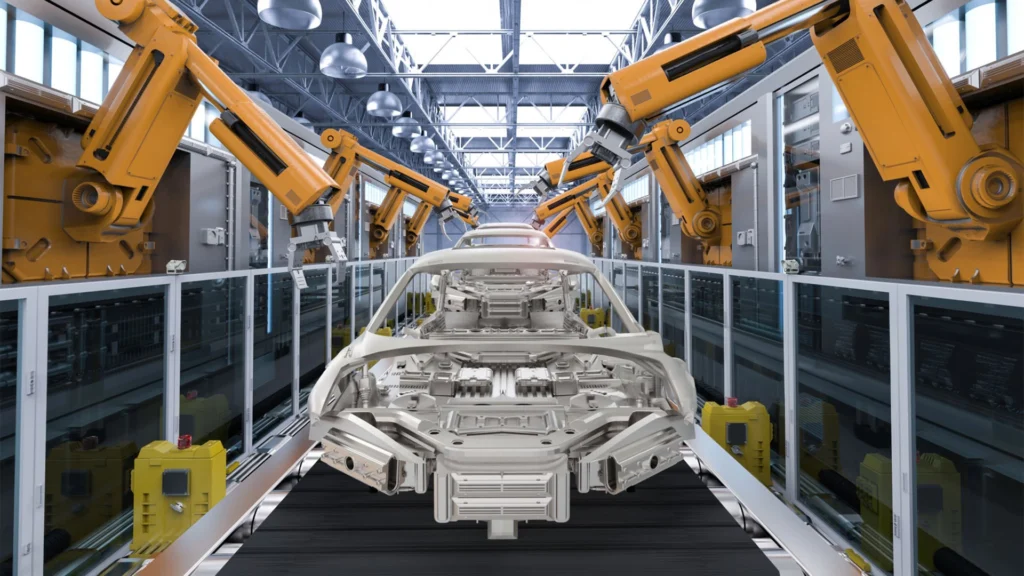
The OEM Market
Automakers make OEM parts that are compatible with the vehicle. Some might also guarantee the installation of the parts. On the other hand, aftermarket parts may or may not be compatible or a perfect fit. Many vendors might not also certify the compatibility of the parts with the vehicle. A broad range of companies produces aftermarket parts at many different price points and allows for a range of choices. But this can also make for a confusing experience. OEM parts usually offer only one or two options, making the experience less complicated.
The fierce competition in the automotive industry, specifically the parts, calls for a strong need for OEM and aftermarket manufacturers to distinguish themselves in this market. This competition among the aftermarket manufacturers results in a wide range of prices and unique features of parts. The quality might or might not equal or exceed to the OEM product. Some compete in this market by offering lower-priced products, that too of lower quality.
OEM companies that are competing with aftermarket businesses increasingly innovate supply chains and product line to deliver a better product at a competitive pricing. OEM and aftermarket companies have been using technologies such as 3D printing to efficiently create on-demand vehicle parts and making their supply chains more flexible. These rapid changes in product demand are costlier than traditional production and sometimes require companies to maintain higher levels of inventory. The on-demand production of auto parts are providing manufacturers with additional production options.
Discover the Top 6 Benefits of OEM Parts
It is essential to maintain your vehicle, whether it is a pre-owned or a brand-new car. However, a few owners skip a few visits to the garage because of the rise in inflation and high fuel prices. Additionally, some buyers prefer to purchase cheap auto parts, hoping they will last a year or two. However, the price and the type of part can impact the vehicle’s age, and they might regret their decision. Therefore, we advise you to go for automotive OEM replacement parts, whether you own a used car or a brand-new one. We have mentioned the benefits of buying OEM auto parts online or offline to make your decision-making convenient.
1) Quality
OEM offers the exact technical specifications for the a1 auto parts initially installed in your vehicle. OEM automotive parts comply with the original automotive manufacturer’s production standards to maintain the same quality auto parts as the ones that were first assembled.
2) Compatibility
OEMs will cause compatibility issues because of the design process. Additionally, their installation is easy, and the vehicle’s operation would be identical. On the other hand, generic parts require more adjustments or modifications to fit, which causes other problems in the long term.
3) Reliability
Regarding material and design, many replacement automotive accessories and parts still need to be considered reliable according to the automotive manufacturer’s requirements. Further, just a small auto part of low quality can impact the whole system. Additionally, the after-market offers fewer basic specs and thicknesses because of their altered budget, which does not give precise quality. However, original auto accessories will provide better long-term reliability and will not be slow to work.
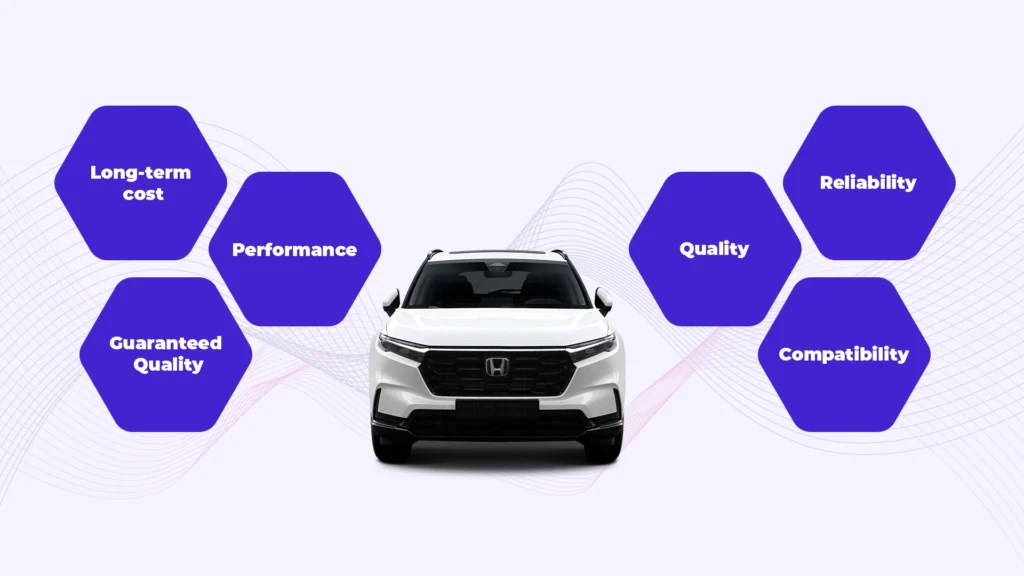
4) Performance
Choosing used OEM parts will ensure your vehicles are safe and operate well. Therefore, to avoid damaging the car and its performance, it is advised to use high-quality parts supplied by OEM. OEM body parts for work vehicles and sports models are genuinely advised.
5) Long-term cost
Purchasing generic parts will lead to additional fees because they cause wear and breakage of the other parts. However, investing in OEM parts will last longer, fit better, and save money in the long term. Additionally, OEM parts require less frequent replacement and repairs, which will help increase your vehicle’s life.
6) Guaranteed Quality
OEM vehicle parts are guaranteed to be perfectly functional and fit for your vehicles. Additionally, investing in cheap and discount auto parts will not work as it should and might not be compatible enough for your cars compared to high-quality OEM parts.
What are the Limitations of OEM?
OEM parts are indeed reliable and offer high-quality performance. However, the resources required to produce a unique product can include development and research costs. Additionally, creating a design before the part is ready for OEM manufacturing and production takes a lot of time. Therefore, investment in automotive OEM products can be high and introduce a risk to the OEM business. We have mentioned a few drawbacks of the OEM below:
1) Revenue responsibility: The brand owner is responsible for the revenue and the business.
2) Product: Your product might lack comparatively to your competitors who would be using the same OEM
3) Limitation on branding: OEMs have limited control over the branding and the product.
4) Experiment: OEMs need an opportunity to innovate new products. However, you can request samples to be produced.
5) High supply demand: Companies deal with OEMs who can sell enough products and fulfill their supply demand.
6) Copied design: Your design component might be stolen from competitors.
What is the Difference Between OEM, Aftermarket Parts, and Genuine Parts?
There is a vast difference between original equipment manufacturers, automotive aftermarket, and genuine OEM parts. Here’s a more detailed breakdown of the critical differences between OEM vs original genuine parts vs aftermarket car parts and accessories:
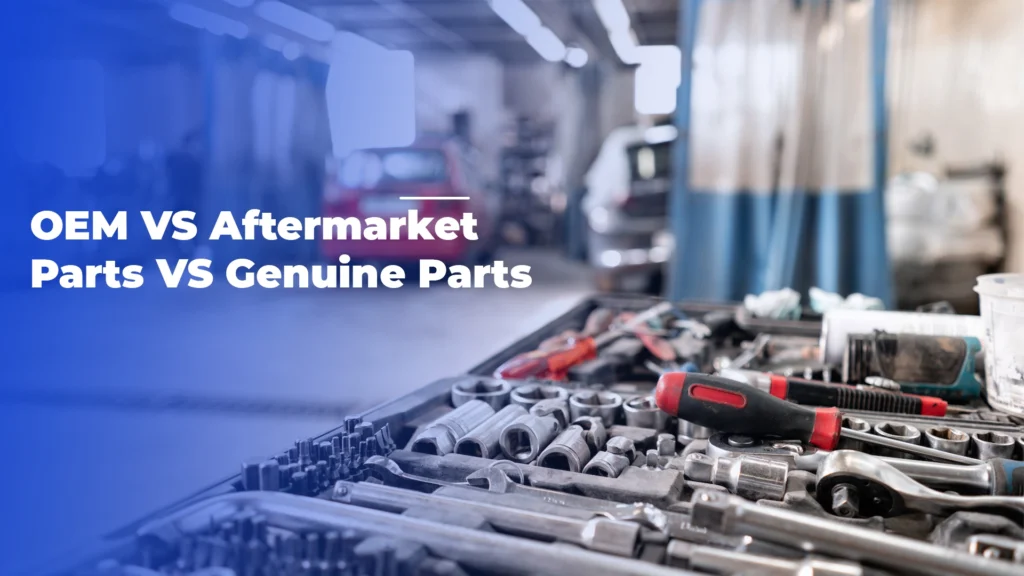
| Difference | Original Equipment Management | Aftermarket Parts | Genuine parts |
| Origin | Made by the same auto OEM companies that manufacture the vehicle or created for the same company but as an external company. | Parts are produced by other independent companies, not the original OEM car manufacturer. | The parts are supplied by the vehicle manufacturer and included in their packaging. |
| Quality | Generally, use high-quality material. | Quality may vary from parts that meet or exceed OEM standards. | Genuine parts are as reliable as OEM parts. |
| Price | Higher Price | Lower Price | Higher than OEM prices |
| Warranty | In almost every case, a vehicle’s warranty isn’t void. | The vehicle’s warranty may be void if the parts fail & damage other components. | The vehicle’s warranty is mostly not void |
| Availability | Limited availability | Wider Selections available | Available directly from the manufacturer and, in a few cases, from the parallel import |
Top 17 Auto OEMs in the World By Revenue
The global OEMs automotive industry is a massive and dynamic sector, with manufacturers constantly innovating and competing for market share. Here’s a look at the top 17 Original Equipment Manufacturers (OEMs) in the world, ranked by their revenue:
| Rank | Automotive OEMs | Revenue |
| 1 | Volkswagen | $284.21 B |
| 2 | Toyota | $260.13 B |
| 3 | Mercedes Benz | $153.95 B |
| 4 | Ford | $151.73 B |
| 5 | General Motors | $147.21 B |
| 6 | BMW | $139.79 B |
| 7 | Honda | $114.00 B |
| 8 | SAIC Motors | $114.00 B |
| 9 | Hyundai | $105.12 B |
| 10 | Stellantis | $101.32 B |
| 11 | Tesla | $96.77 B |
| 12 | Nissan | $86.48 B |
| 13 | BYD | $84.89 B |
| 14 | KIA | $75.81 B |
| 15 | TATA Motors | $50.92 B |
| 16 | Renault | $49.68 B |
| 17 | Porsche | $43.98 B |
Top 10 Automotive OEMs in the World in 2024 by Number of Employees
As the auto industry races to change, here are the ten biggest automakers by employee count in 2024. These automobile oem companies are like car-building giants, with tons of people working to bring us the latest rides.
| Rank | Name | No. of Employees |
| 1 | Volkswagen | 650,951 |
| 2 | BYD | 570,100 |
| 3 | Toyota | 377,369 |
| 4 | Stellantis | 272,367 |
| 5 | Mahindra & Mahindra | 260,000 |
| 6 | SAIC Motors | 215,999 |
| 7 | Honda | 197,039 |
| 8 | Ford | 173,000 |
| 9 | Mercedes Benz | 167,397 |
| 10 | General Motor | 167,000 |
Top 10 OEM Companies in the World in 2024 by Enterprise Value
Buckle up for a shift in gears! The auto industry is revving its engine closer to a new era, and the most essential gamers are now valued. Here’s a look at the top 10 auto Original Equipment Manufacturers (OEMs) globally in 2024, ranked by their enterprise value.
| Rank | Name | Enterprise Value |
| 1 | Toyota Motor | 471.29B |
| 2 | Tesla | 429.19B |
| 3 | Volkswagen | 214.89B |
| 4 | SAIC Motors | 179.30B |
| 5 | Ford Motor | 160.27B |
| 6 | Mercedes-Benz Group | 155.23B |
| 7 | BMW | 131.75B |
| 8 | Honda Motor | 92.07B |
| 9 | BYD | 64.65B |
| 10 | Stellantis | 51.14B |
Top 10 OEMs in the World in 2024 by EV/EBITDA
Making electric cars and keeping the environment happy costs a lot! Here’s an automotive OEM list of the top 10 manufacturers in 2024, ranked through their EV/EBITDA ratio.
| Rank | Name | EV/EBITDA |
| 1 | Ford | 13.48 |
| 2 | BYD | 12.89 |
| 3 | Toyota | 11.2 |
| 4 | General Motor | 6.7 |
| 5 | Honda Motor | 5.92 |
| 6 | BMW | 5.1 |
| 7 | Hyundai Motor | 4.8 |
| 8 | Volkswagen | 3.37 |
| 9 | Stellantis | 1.14 |
| 10 | The Lion Electric Company | -8.43 |
Automotive OEMs Market Scope and Segmentation
The auto OEM Original Equipment Manufacturer is made for the market and is projected to reach USD 54 billion by 2032, fueled by evolving customer choices, technological improvements, and international enterprise expansion. OEM produces vehicle accessories and parts for a particular automobile company per their specifications and provides their desired packaging. Additionally, unlike aftermarket, automotive OEM suppliers genuine parts to vehicle brands.
Market Scope
1) Evolving Consumer Preferences: The car buying journey is evolving, and demand for connectivity, protection, and gas efficiency fuels the marketplace boom.
2) Technological Advancements: Electric and self-sustaining automobile technologies contribute to market enlargement.
3) Global Industry Expansion: Emerging markets and urbanization force improved demand for motors and additives.
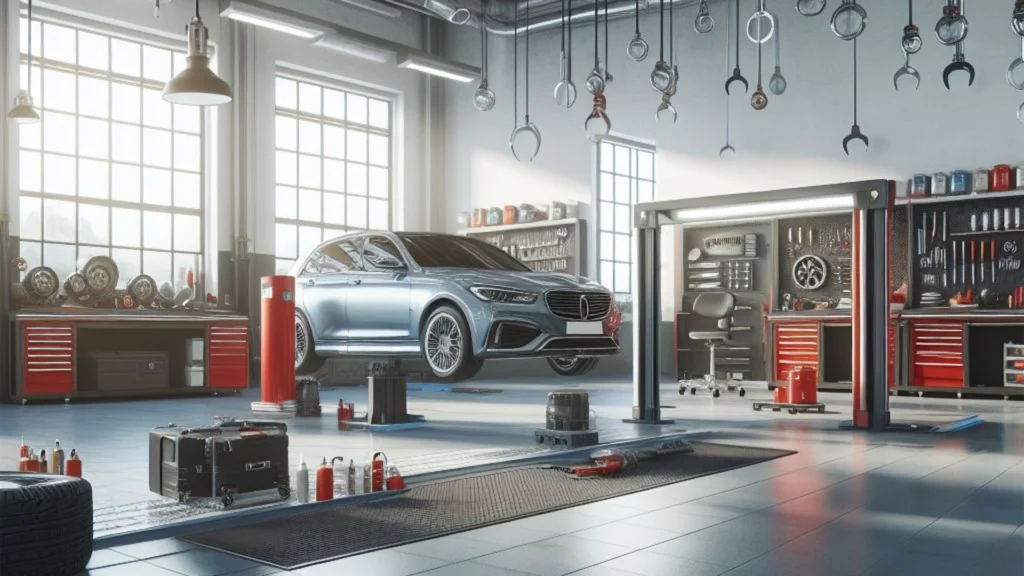
Segmentation
1) Components: Powertrain, Chassis, Electronics, External Body, Car Interiors.
2) Vehicle Type: Commercial Vehicles, Passenger Cars, Electric Cars.
3) Distribution Channel: Retailers, Wholesalers, Distributors.
Understanding market segmentation is crucial for OEMs to confirm particular needs, innovate, and capture possibilities within the dynamic car OEMs enterprise.
Market Insights of Automotive Original Equipment Manufacturers (OEMs)
Europe dominates the top automotive OEM companies marketplace because of a significant growth in vehicle purchases and a great shift closer to advanced brake structures amongst clients. Additionally, the market is expected to reach USD 48.62 billion by 2023, at a CAGR of 4.67% during the predicted period. However, it was valued at USD 33.75 billion in the year 2022. Conversely, Asia-Pacific is witnessing rapid growth, propelled by a surge in automotive leads & vehicle sales and sustained consumer demand. Our analysis extends to inspecting the unique regulatory frameworks across individual nations, the complexities of producing and distributing automotive components, and the aggressive panorama, supplying treasured insights into market tendencies and dynamics for stakeholders to make informed choices.
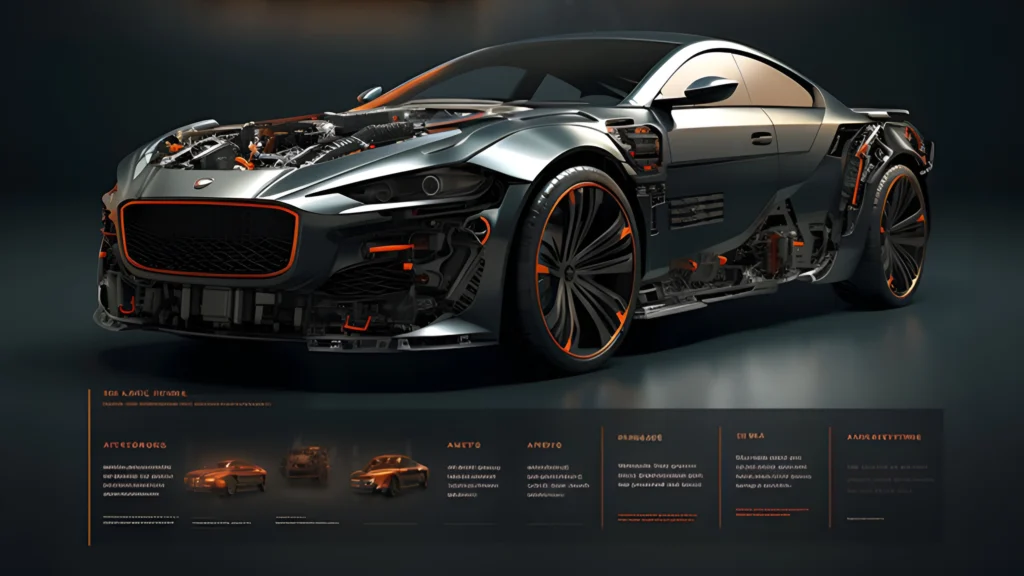
Global Automotive Original Equipment Manufacturer (OEMS) Market Scope
The scope of the global Automotive OEM (Original Equipment Manufacturer) marketplace is multifaceted, encompassing a wide range of components and offerings tailored to cater to the ever-evolving needs of cutting-edge vehicles. The global market size of auto OEMs was valued at USD 35.33 billion in 2023. It is projected to reach USD 50.89 billion by 2031, with a CAGR of 4.67% from 2024 to 2031. Let’s delve deeper into the numerous dimensions of its scope:
1) Market Size and Growth
Currently, the marketplace is valued from USD 34.6 billion to USD 36 billion, reflecting its most considerable automotive OEMs presence in the car industry. Projections indicate a robust boom trajectory, with a Compound Annual Growth Rate (CAGR) expected to be between 4.17% and 4.67% between 2030 and 2032. This increase is expected to propel the marketplace length inside USD 46 billion to USD 54 billion, underscoring the significant opportunities in advance.
2) Drivers of Growth
Several elements are fueling the expansion of the Automobile OEMs marketplace. Shifting client choices is pivotal, with an increasing call for superior capabilities, including connectivity, protection improvements, and stepped-forward fuel performance. Moreover, technological advancements drive transformative adjustments, particularly with the transition toward electric-powered and autonomous automobiles. The global automobile industry’s growth, in addition, amplifies growth possibilities, fueled by the rising ownership of motors throughout numerous geographical areas.
3) Technological Innovations
Technological innovation is a cornerstone of auto OEM car manufacturing. Advancements in substance technology, production procedures, and digitalization are revolutionizing the design and production of vehicle additives. From lightweight substances for more desirable fuel performance to state-of-the-art sensors for independent competencies, innovation remains a key driving force shaping the market’s panorama.
4) Global Market Dynamics
The worldwide auto OEMs market operates within a dynamic panorama characterized by regulatory changes, geopolitical shifts, and monetary fluctuations. Understanding those dynamics is imperative for stakeholders to navigate demanding situations correctly and capitalize on emerging opportunities. Collaborations, strategic partnerships, and agile business fashions are essential to thrive in this rapidly evolving environment.
5) Emerging Trends
Beyond the mounted boom drivers, numerous automotive industry trends are reshaping OEM companies in automotive. These encompass the upward thrust of electric cars (EVs), the combination of synthetic intelligence (AI) in automobile structures, and the advent of mobility-as-a-service (MaaS) platforms. Embracing these tendencies permits enterprise gamers to live ahead of the curve and effectively cater to evolving patron demands.
In essence, comprehending the multifaceted scope of the worldwide Automotive OEM manufacturer’s marketplace is pivotal for organizations throughout the cost chain. By staying attuned to market dynamics, embracing innovation, and fostering strategic collaborations, stakeholders can position themselves for sustained growth and competitiveness in the OEM car companies panorama.
Global Automotive Original Equipment Manufacturer (OEMS) Market Dynamics
According to Data Bridge Market Research, the automotive original equipment manufacturer (OEMS) market was valued at USD 33.75 billion in 2022 and is expected to reach USD 48.62 billion by 2030, at a CAGR of 4.67% during the forecast period. Let’s quickly look at what’s happening in the Automotive Original Equipment Manufacturer (OEM) market. Here’s a simple breakdown of the main things driving the market:
Drivers
1) As more people worldwide buy cars, there’s a more significant need for OEM used auto parts to keep them running smoothly.
2) OEMs ensure their products last longer, which gives car owners confidence in their vehicles’ reliability.
Opportunities
1) New technologies are opening up opportunities for automotive OEMs to create better OEM car parts, especially in areas like self-driving cars and batteries.
2) As cars get more complicated, there’s a growing demand for help with maintenance and repairs, giving OEMs a chance to offer better customer support.
Restraints/Challenges
1) People are starting to prefer electric and eco-friendly cars, which means OEMs must adapt to new technologies to stay competitive.
2) Problems in the supply chain, like insufficient materials or political issues, can make it hard for OEMs to keep making their products.
Recent Developments
1) MasterBeat Corporation uses Amazon to sell more OEM auto industry products through JTEC Autoworld.
2) CoorsTek Inc. is building a big new factory in Thailand to make more car auto parts.
3) CeramTec GmbH is partnering with Fraunhofer Institute to help OEM automotive manufacturers make better electric car parts.
Conclusion
The future of the Automotive OEM marketplace promises to be dynamic and thrilling. As client preferences evolve and technological advancements continue to reshape the industry, OEMs that can adapt and innovate will be best for success. This blog provided a complete review of the global OEM market scope, segmentation, and critical tendencies. By understanding the drivers, possibilities, and demanding situations that outline this marketplace, groups can make knowledgeable selections about their strategies and investments. Whether you are a producer, supplier, or undoubtedly curious about the future of transportation, this weblog has equipped you with precious insights into the automotive OEM car industry sector.


